Real Sea Monsters Exist
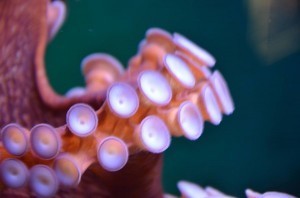 Florida sea creature hotly debated by scientific community for over 100 years. A controversy that gained international attention in multiple centuries.
Florida sea creature hotly debated by scientific community for over 100 years. A controversy that gained international attention in multiple centuries.
I’m a Florida writer, author of The St. Augustine Trilogy, a series for young adults and adults young at heart. As the title for these three combined novels suggests, they all take place in my favorite city of St. Augustine, Florida.
As America’s oldest and most haunted city, St. Augustine was the perfect setting for these paranormal/historical books.
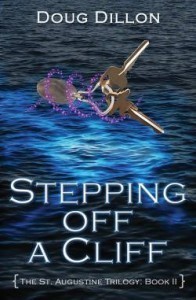 In the development of Book II in the trilogy, Stepping Off a Cliff, I needed some sort of unusual creature as an integral part of the plot. Much to my amazement, I found that such a fascinating animal actually existed in St. Augustine’s past.
In the development of Book II in the trilogy, Stepping Off a Cliff, I needed some sort of unusual creature as an integral part of the plot. Much to my amazement, I found that such a fascinating animal actually existed in St. Augustine’s past.
In fact, I originally used these key words, “St. Augustine Monster”, in a Google search and came up with a bunch of hits with titles saying, “The St. Augustine Monster.”
And after scanning some of that information, I found out that the St. Augustine Historical Society, where I was doing research for the trilogy, even played a part in what turned out to be one of the most sensational news stories of the late 1880s.
Of course, on my next trip to St. Augustine and its historical society, I asked for information on “The St. Augustine Monster” and was handed a thick file. What fascinating reading!
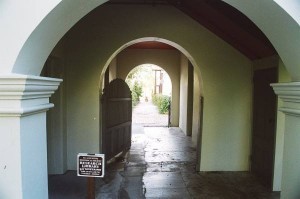
Street entrance to the St. Augustine Historical Society’s Research Library
At the end of this post, you will find some of the links I first encountered on Google for you to begin your own search for information on this subject if you should choose to do so. But in the meantime, I decided to condense my basic research as much as possible in order for you to get a quick glimpse of this intriguing event in Florida history.
1. Nov. 30, 1896
Two boys discover a huge carcass of some sort while riding their bikes on St. Augustine Beach.

One of Dr. Webb’s photos of the carcass
2. Dec. 1, 1896
The boys bring Dr. DeWitt Webb to view the carcass. Webb is a physician, amateur naturalist and head of the St. Augustine Historical Society and Institute of Science (Today known as the St. Augustine Historical Society).
What Webb Finds, Does and Concludes:
• The carcass is partly buried in sand and it is badly deteriorated.
• He digs it partly out.
• The surface is pale pink but in the reflection of bright sunlight it looks a whitish silver color.
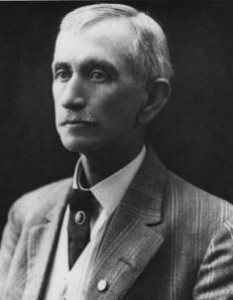
Dr. Webb
• The length measures 18’ and the width 7’-10’ wide.
• Webb estimates the weight at somewhere between 4 and 7 tons.
• The carcass has a thick hide (3+ inches) – hard to cut – dulls knives & axes.
• The carcass has stumps that to Webb looks like where arms had been attached.
• Webb believes what the boys found is the remains of a giant octopus.
3. Dec. 7, 1896
• Webb gets some help and has the carcass photographed.
• Close to this date, a Mr. Wilson- digs out carcass even more and finds more “arm” stumps and one arm 23’ long.
 4. Jan. 9-15, 1897
4. Jan. 9-15, 1897
• A storm carries the carcass south close to Crescent Beach.
• Dr. Webb finds it again. He takes 4 horses, six men & planking, moves the carcass back to St. Augustine Beach and rolls it 40’ above high tide line.
• Webb adjusts his measurement of the creature’s length from 18’ to 21’.
• The carcass becomes a tourist attraction.
• News reports from this era call the creature, “The St. Augustine Monster.”
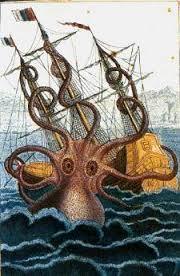 5. March 17, 1897
5. March 17, 1897
• The carcass is last seen on the beach.
6. Scientific Analysis, late 1896, early 1897
• Dr. Webb initially sent drawings of the carcass to Dr. Verrill of Yale.
• At first, Verrill thinks Webb’s find might be a giant squid.
• Verrill then changes his opinion and calls it a giant octopus. He even publishes his conclusion and gives Webb’s find a scientific name – Octopus Giganteous. He determines, based upon the carcass dimensions sent by Webb, that the creature’s arms might have been 100’ long, giving it a diameter of 200’.
• But once Verrill gets photos & samples of the carcass from Webb, he changes his mind yet again. This time, he says that the creature is actually the remains of a large whale – whale skin and blubber.
• There the story ends until the late twentieth century.
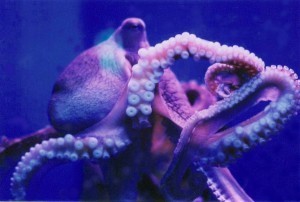 7. Revived Interest, 1957
7. Revived Interest, 1957
• Mr. Forest Wood, Director of Marine Studios, later called Marineland, just south of St. Augustine, becomes interested in Dr. Webb’s forgotten find.
• He gathers all the information as is available about the creature and locates the old tissue specimens at the Smithsonian Institute.
• Wood begins a campaign to get scientists to analyze what he has found using modern methods of investigation. That effort takes a while.
8. Scientific Analysis, 1971
• One scientist agrees to investigate, Dr. Genarro at the University of Florida
• He studies the case, examines the photos and analyzes the specimens.
• His conclusion is that what Dr. Webb found was indeed a giant octopus.
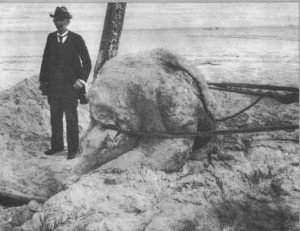
The carcass and possibly Dr. Webb next to it
9. Scientific Analysis, 1986
• Dr. Roy Mackal, University of Chicago, verifies Dr. Genarro’s findings.
10. Scientific Analysis, 1995
• A joint team of investigators from the University of Maryland and Indiana University open their own investigation (Sidney Pierce, Gerald Smith, Timothy Maugel and Eugenie Clark).
• They conclude that Dr. Verrill’s final verdict was correct. The remains found by Dr. Webb were those of a whale.
So there you have it, at least where the story rests at this point. And as promised previously, below you will find links to some excellent sources that in turn will allow you to burrow even deeper.
Enjoy.

Castillio de San Marcos, the old Spanish fort on Matanzas Bay
The Smithsonian Institution Archives
The St. Augustine Record (St. Augustine’s hometown newspaper)
Oh, one more thing. Below you will find the book trailer for Stepping Off a Cliff. You might find it interesting to see how “The St. Augustine Monster” gets worked into the plot here in a tantalizing way.



